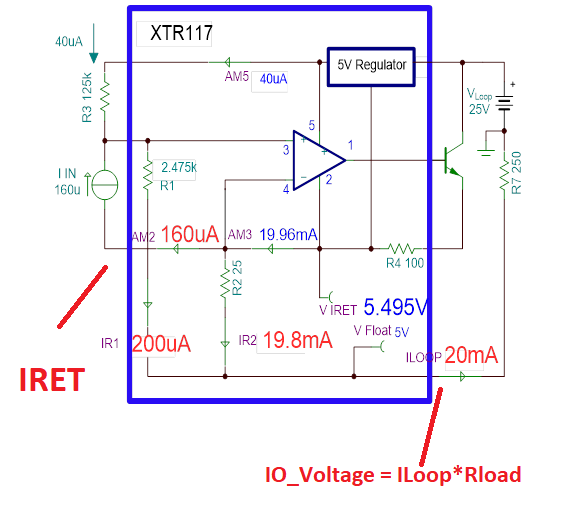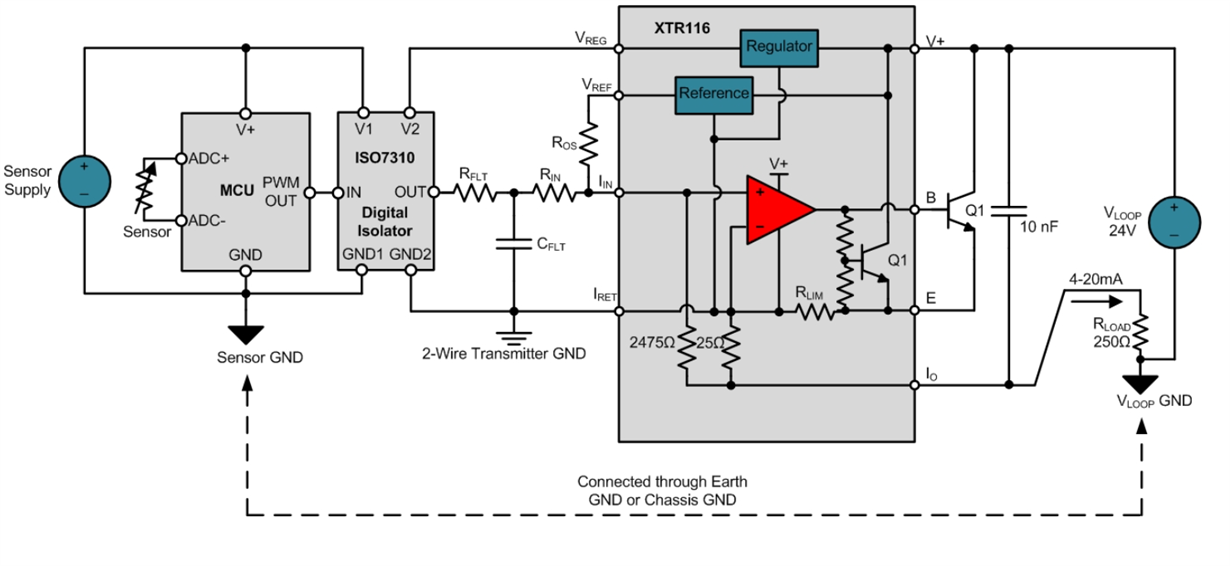Other Parts Discussed in Thread: XTR111
Hi,
i'm updating my transmiter to work with two outputs like this one.
As i'm already using XTR117 i'm trying to (almost giving up) to manage using it.
In the circuit above i'm accepting 1% error of the current going to DAC_OUT2 (actually i could programatically compensate this error). All the circuit is powered by 5V.
The problem there is that i can't figure it out how to keep Iret from U5 in the same potencial as the Iret from U4, without leting any current in U5's Iret.
I could use a isolator, but i don't have any current left in the input side, and the prices is going very high in those low quiscient current.
What's my best option? Design all the analog loop circuit? Is there any solution or similar IC that i could work with?
Thanks!




